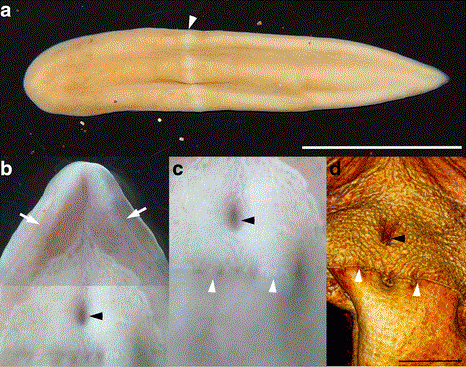Mysterious new deep-sea species with no anus sheds light on early evolution
The primitive species lacks certain features that are common in more complex animals.

Japanese scientists have discovered a mysterious new deep-sea species that could help shine a light on the early evolution of animals.
The creature, described in a new study published in the journal BMC Evolutionary Biology, is a new type of marine worm belonging to the genus Xenoturbella.
The primitive species – which the researchers have named Xenoturbella japonica – lacks certain features that are common in more complex animals, including a centralised nervous system, respiratory system, kidneys, and an anus. As a consequence, it is important for understanding the evolutionary origins of these structures.
In the study, researchers from the University of Tsukuba describe two specimens of X. japonica that were dredged from the seabed in the western Pacific. The first was an adult female measuring about 5cm in length, while the second was a juvenile measuring about 1cm. Both are pale orange in colour and have oval-shaped mouths.
Researchers analysed the internal structures of the animals using computer scanning methods while also conducting DNA analysis to confirm they represented a new species.
"Molecular analysis confirmed that X. japonica is distinct from previously described species of Xenoturbella," said co-author Hideyuki Miyazawa.
Lead author Hiroaki Nakano added that "this new species may be particularly important for unravelling the early history of the Bilateria".
Bilateria is the name for a large group of animals whose bodies display so-called bilateral symmetry – meaning they have a distinctive 'head', 'tail', 'back' and 'belly', as well as a left and right side. Most complex animals belong to this group. This is in contrast to animals such as jellyfish, which have a topside and a downside but no identifiable front or back.
The classification of the Xenoturbella genus in the tree of life has been controversial, but the animals are generally regarded as an ancestral member of the Bilaterians, or part of a 'sister' group.
The study of Xenoturbella has been restricted by the difficulty in getting hold of specimens – the worms live on the seafloor, thousands of metres below the surface.
However, the Japanese scientists have found a habitat that is easily accessible from a marine station, which will improve access for future research expeditions.





















